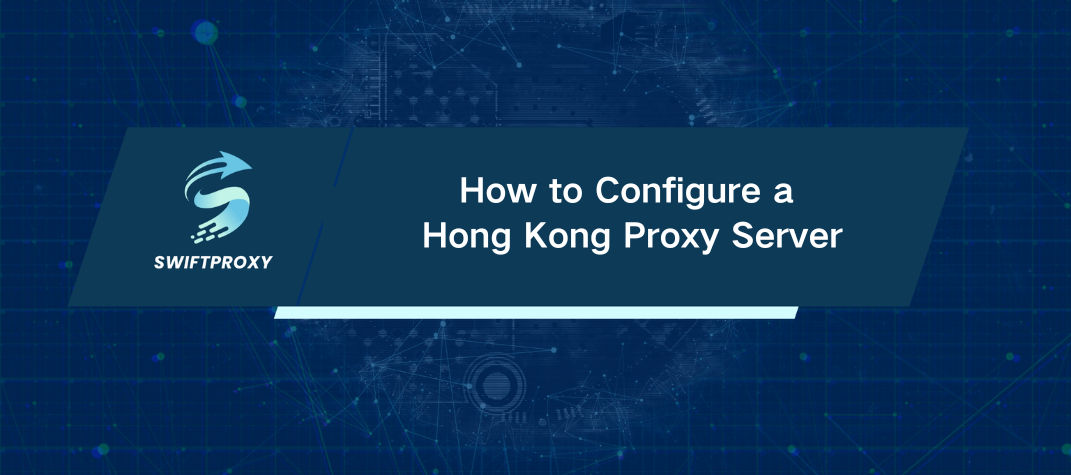How to Configure a Hong Kong Proxy Server

Setting up a Hong Kong proxy server is a strategic move in today's interconnected digital landscape. With over 3.6 billion people relying on the internet for daily activities, the need for online privacy and access to global content has never been more crucial. Let's explore how to establish your own proxy server, ensuring you can navigate the web freely and securely.
What Are Proxy Servers?
A proxy server acts as a bridge between your device and the internet. When you request a webpage, your request first goes through the proxy server. It masks your original IP address and forwards your request. The response travels back the same way, providing anonymity and the ability to bypass geographical restrictions. This setup allows for discreet online activities.
Advantages of Employing a Hong Kong Proxy Server
Using a Hong Kong proxy server offers several advantages:
Unlock Geo-Restricted Content: Many streaming platforms limit content based on location. A Hong Kong IP allows access to shows and services that might be blocked in your area.
Enhanced Online Privacy: Masking your real IP address improves security and reduces your digital footprint.
Censorship Bypass: If you are in a region with strict internet censorship, a Hong Kong IP can grant access to previously restricted sites.
Trial and Development: Developers can simulate local browsing experiences by using a Hong Kong IP, ensuring applications function as intended for users in that region.
Necessary Components for Proxy Server Setup
To get started, gather the following:
Server: A dedicated or cloud-based server located in Hong Kong. Options like AWS, DigitalOcean, or Linode are suitable.
Operating System: Choose a compatible OS, such as Linux (Ubuntu, CentOS) or Windows.
Proxy Software: Software needed to configure your proxy server includes Squid, Nginx, or 3proxy.
Hong Kong IP Address: Ensure your server is set up in Hong Kong to obtain your desired IP address.
Comprehensive Guide to Setting Up Hong Kong Proxy Server
1. Acquire Your Server
1. Pick a Cloud Provider: Select a provider that offers Hong Kong servers. Some options include:
AWS: Offers a variety of instance types.
DigitalOcean: Known for user-friendly setup.
Linode: Reliable performance at competitive prices.
2. Register an Account: Sign up and prepare to launch your server.
3. Start Your Server: Follow setup instructions, ensuring you select Hong Kong as your region.
4. Record Your IP Address: Once your server is operational, take note of your assigned Hong Kong IP address.
2. Deploy Proxy Software
1. Link to the Server: Use SSH to access your server. Open your terminal and run:
bash
ssh username@your_hong_kong_ip
Replace \`username\` and \`your_hong_kong_ip\` with your actual details.
2. Upgrade the System: Keep everything fresh and secure:
bash
sudo apt update && sudo apt upgrade -y
3. Deploy Proxy Software: For this guide, we will use Squid:
bash
sudo apt install squid -y
3. Set Up Squid Proxy Server
1. Uncover the Configuration File: Access the main configuration file with:
bash
sudo nano /etc/squid/squid.conf
2. Set Up the HTTP Port: Squid defaults to port 3128, but you can change this if needed:
plaintext
http_port 3128
3. Grant Access: Configure access control lists (ACLs) to allow connections from your local machine:
plaintext
acl localnet src your_local_ip
http_access allow localnet
Replace \`your_local_ip\` with your actual IP. For testing, you might allow all IPs (not recommended for long-term use):
plaintext
http_access allow all
4. Logging Activation: Monitor activity with logging:
plaintext
access_log /var/log/squid/access.log
5. Save Changes and Exit: Save your changes before exiting the editor.
4. Begin and Enable Squid
1. Start the Squid Service:
bash
sudo systemctl start squid
2. Enable Squid on Boot:
bash
sudo systemctl enable squid
5. Run a Proxy Server Test
1. Set Up Your Browser: Go to your browser’s proxy settings. Enter your server’s IP and the port (default is 3128).
2. Confirm Your IP Address: Visit \`whatismyip.com\` to confirm your IP shows as Hong Kong.
3. Test Network Connection: Try accessing a geo-restricted site to ensure everything works.
6. Maintain and Monitor
1. Consistent Updates: Keep your server and software updated for optimal performance.
2. Check Logs: Regularly review access logs for unusual activity:
bash
tail -f /var/log/squid/access.log
3. Refine Configuration: Adjust settings based on usage patterns for better performance or security.
Common Issues and Solutions
Proxy Server Unresponsive: Check the Squid service status:
bash
sudo systemctl status squid
Connection Denied: Ensure your firewall allows traffic on the configured port.
IP Address Unmasked: Double-check your browser's proxy settings and ensure the server is operational.
Reduced Performance: Consider optimizing the configuration or upgrading your server resources.
Conclusion
Setting up a Hong Kong proxy server provides significant advantages, including access to restricted content and enhanced online privacy. By following these steps, you can successfully configure a proxy server tailored to your needs. Whether for personal use or business applications, a well-configured proxy server becomes a valuable tool in navigating the complexities of the internet.

















































